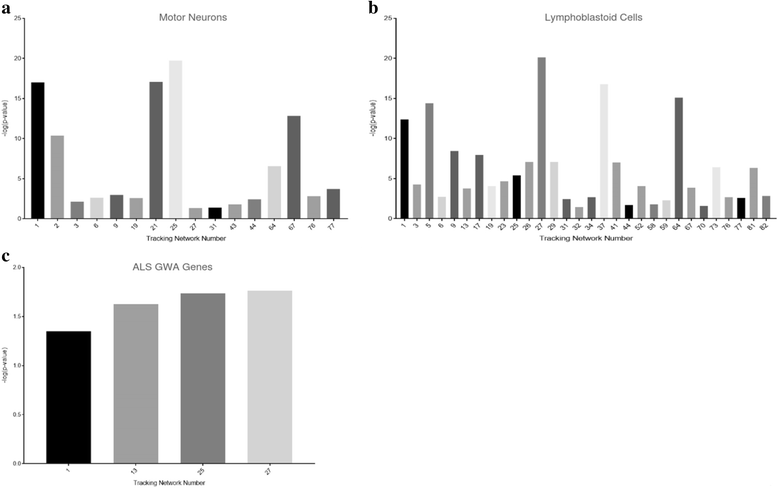A data-driven approach links microglia to pathology and prognosis in amyotrophic lateral sclerosis
- PMID: 28302159
- PMCID: PMC5353945
- DOI: 10.1186/s40478-017-0424-x
A data-driven approach links microglia to pathology and prognosis in amyotrophic lateral sclerosis
Abstract
Amyotrophic lateral sclerosis (ALS) is a devastating neurodegenerative disease that lacks a predictive and broadly applicable biomarker. Continued focus on mutation-specific upstream mechanisms has yet to predict disease progression in the clinic. Utilising cellular pathology common to the majority of ALS patients, we implemented an objective transcriptome-driven approach to develop noninvasive prognostic biomarkers for disease progression. Genes expressed in laser captured motor neurons in direct correlation (Spearman rank correlation, p < 0.01) with counts of neuropathology were developed into co-expression network modules. Screening modules using three gene sets representing rate of disease progression and upstream genetic association with ALS led to the prioritisation of a single module enriched for immune response to motor neuron degeneration. Genes in the network module are important for microglial activation and predict disease progression in genetically heterogeneous ALS cohorts: Expression of three genes in peripheral lymphocytes - LILRA2, ITGB2 and CEBPD - differentiate patients with rapid and slowly progressive disease, suggesting promise as a blood-derived biomarker. TREM2 is a member of the network module and the level of soluble TREM2 protein in cerebrospinal fluid is shown to predict survival when measured in late stage disease (Spearman rank correlation, p = 0.01). Our data-driven systems approach has, for the first time, directly linked microglia to the development of motor neuron pathology. LILRA2, ITGB2 and CEBPD represent peripherally accessible candidate biomarkers and TREM2 provides a broadly applicable therapeutic target for ALS.
Keywords: Amyotrophic lateral sclerosis; Biomarkers; Microglia; Neuropathology; TREM2; Transciptome.
Figures




References
-
- Beers DR, Henkel JS, Zhao W, Wang J, Huang A, Wen S, et al. Endogenous regulatory T lymphocytes ameliorate amyotrophic lateral sclerosis in mice and correlate with disease progression in patients with amyotrophic lateral sclerosis. Brain. 2011;134:1293–314. doi: 10.1093/brain/awr074. - DOI - PMC - PubMed
Publication types
MeSH terms
Substances
Grants and funding
LinkOut - more resources
Full Text Sources
Other Literature Sources
Medical
Miscellaneous

